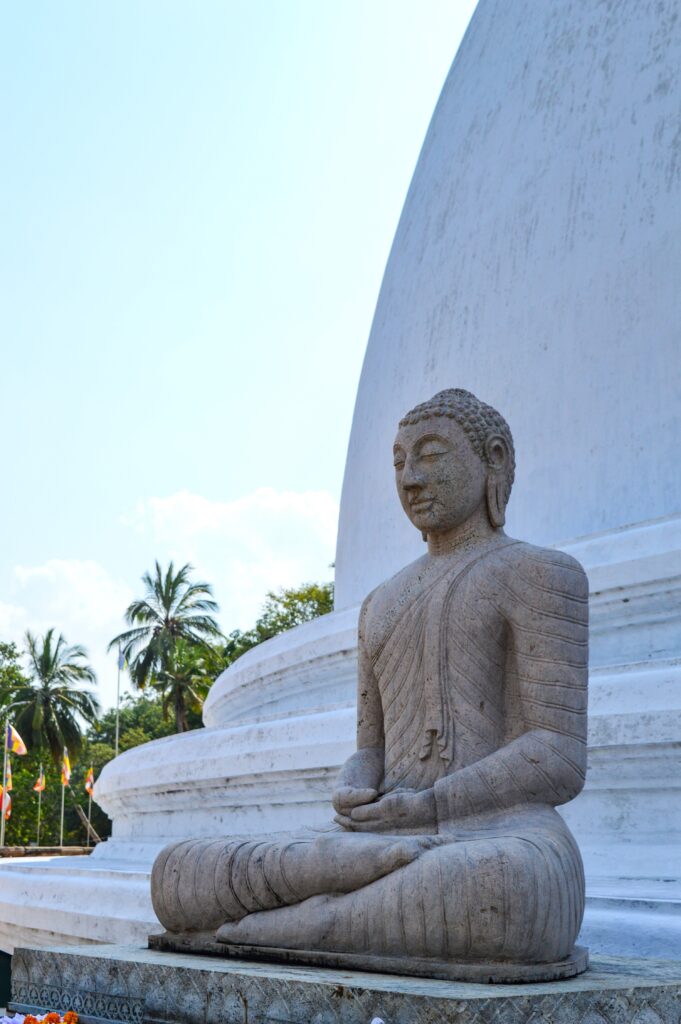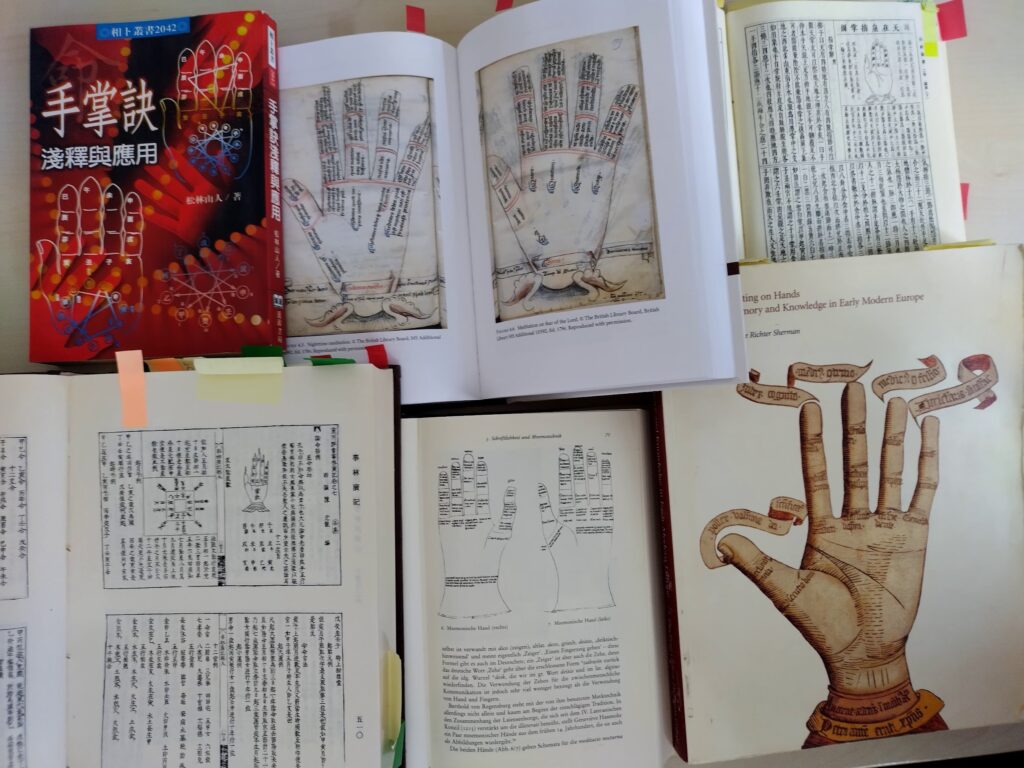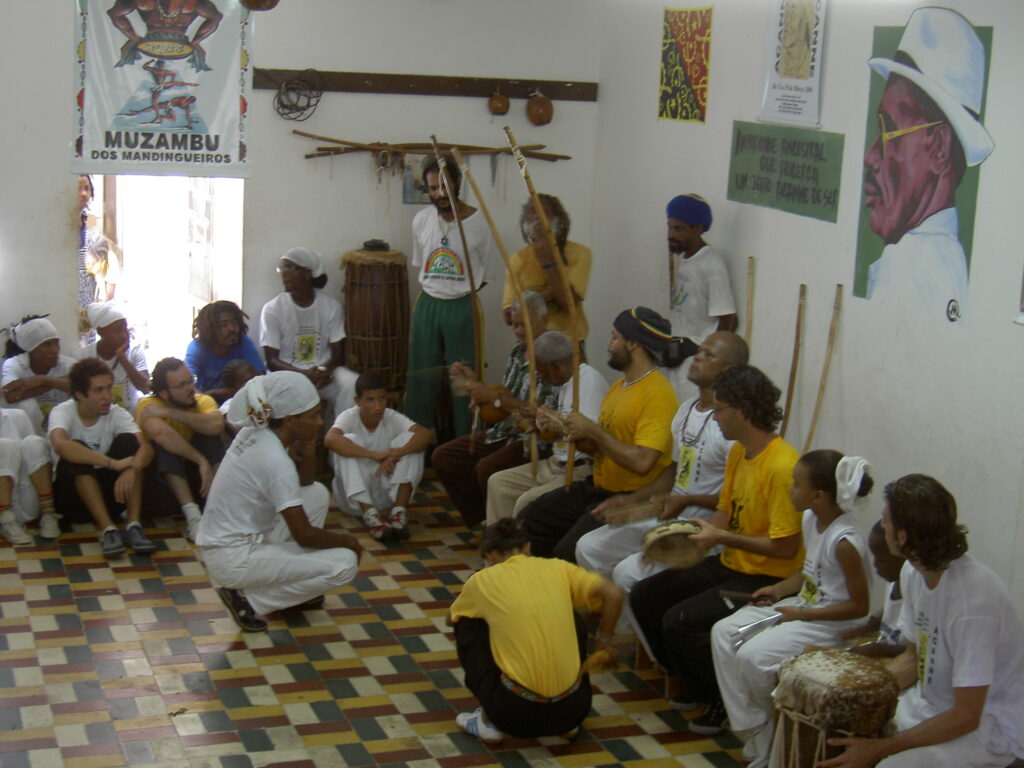By Stephan Palmié
Within days of Columbus’ landing in the Bahamas thinking he was close to mainland of China, he began drafting reports to the Spanish crown detailing conversations with people whom he had come to call “indios”. Columbus had a translator on board. But even if he had reached Asia by a westward route, the man could have been of little help (he spoke Greek, Hebrew, Aramaic, and Arabic). What Columbus relied upon was a little specimen box, the contents of which he repeatedly showed to his puzzled interlocutors. It contained samples of spices and gold (which his reading of Marco Polo, Pliny and Strabo had predisposed him to seek there). After small amounts of gold were proffered, pointing invariably ensued. Go elsewhere, we might imagine the natives to have told him. You’ll find it there.
Here we have a case of what W.O. Quine in a famous thought experiment involving a linguist, hitherto uncontacted natives, a rabbit and the word “gavagai” called “radical translation”. What Quine aimed to convey is not only the impossibility of context-free reference, but the fundamental indeterminacy of any form of linguistic comprehension. And indeed, Columbus’ Taino interlocutors may have been referring to the metallurgic equivalent of undetached rabbit parts (Quine’s example). Still, some form of – however fateful – working misunderstanding did occur. The emphasis is on “working” because similar to Captain Cook’s arrival in Hawaii (famously, but not uncontroversially analyzed by my late colleague Marshall Sahlins), the conjunction of radically different conceptual schemes yielded consequential performative results. As I argued in the paper I presented at CAS-E, this was so because humans are endowed with the faculty of transcendence, acquired in infancy, that enables us to form not just theories of mind, but to project them on to others whom we recognize as persons – whether these be live consociates (including culturally “alien” ones), people with whom we form “parasocial relationships” (think Taylor Swift or Donald Trump), and the unforgotten dead – parents, ancestors, social theorists, or indeed the spirit of an African slave upon whom my interlocutors in Miami, some 40 years ago, taught me to bestow personhood. Although it is me who engages such “metapersons” in my thinking, and so reproduce their lease on life, I am inclined to follow Donald Davidson in arguing that they are part and parcel of my knowledge of self, world, and other.
I was, of course, very pleased by the positive reaction my paper received at CAS-E. But for me, the main take-aways from the discussion were first, Paul Stoller’s comments about the illusion of “having found one’s feet” among the “Other”, and second, a persistent interest in my own investment in Afro-Cuban religions expressed by several members of the audience (I should add here that I far prefer the term “ritual traditions” over “religions” – even though, for reasons that aren’t hard to understand, the latter terminology has come to be preferred by practitioners: if both the Cuban and US state have recognized your practices as such, what fool would insist that he or she is not practicing “a religion”?). Let me tackle these two issues in turn. In a poignant anecdote about his research on Songhai marketeers in New York, Paul reminded us that ethnographic knowledge is knowledge at the limit. No matter his command of the language, his prior apprenticeship and initiation into the world of Songhai occult practices during prior long term ethnographic field work in Senegal. To his interlocutors and friends he ultimately remained “the white guy”. So, of course, did I – in both Miami and Havana. In fact, for the two diviner-interlocutors, Carlos and Cecilia, the Peircean “abduction” that a dead African slave named Tomás was watching over me was precisely the reason for why a complete stranger to their lives and traditions – a white German guy to boot — had washed up on their doorstep. In their view, Tomás had directed my footsteps. For me, of course, matters weren’t quite that simple, and in a sense, the paper I presented was an attempt to clarify the changes that my own thinking about such matters has undergone in the past four decades.
In my 2002 book Wizards and Scientists, I turned Tomás into a bit of an analytical device to denounce the violent Atlantic modernity that “someone very much like Tomás” would have endured, and to which I (or “someone very much like me”) can only stand as however unwitting an heir. But what João de Pina Cabral calls “the ethnographic gesture” has to go further than just that. Which returns me both to the limits of the kind of knowledge it can generate, and to the question of my own involvement in Afro-Cuban ritual traditions. For nothing, I think, better illustrates such limits than the issue of initiation into the cult of the oricha (for which some, but by no means all, of us are predestinated: you can’t just want to become a Santero. Divination has to ratify that the gods want you to). Particularly during my research in Havana’s municipality of Regla where I made friends who really cared about this Yuma (a Cuban term for foreigners) who kept knocking at their door, I increasingly became wary of situations in which divination or other signs might indicate to them that terrible things would befall me were I not to be initiated. For me this was an ethical and moral dilemma. Different from a good dozen of other scholars who underwent initiation for reasons ranging from good to positively bad faith, I knew where my limits lay.
This is what I meant by saying that we can learn to navigate the furniture of other worlds to a reasonable degree, but cannot bring such furniture home, and home intact (besides: what would home look like, then?). For me, acknowledging that my biography has become intertwined with what Anastasios Panagiotopoulos might call Tomás’ “necrography” (that is, his path in the afterlife) is one thing. Tomás has allowed me to ask questions that I might otherwise never have thought of. I, in turn, maintain his lease on the afterlife instead of banishing him to the realm of the forgotten dead. And that’s okay. But doing justice to the needs and desires of 8-12 hungry deities in my apartment or my office at the University of Chicago is simply out of the question. I know a very few people who actually manage to live up to the ethical responsibilities that come with initiation into the cult of the oricha in their private and professional lives. But to do anything less strikes me as at least disrespectful, if not an outright moral failure. Who knows? Perhaps one day an oricha will “claim my head” (demand my initiation). But for now, I prefer to remain an aleyo (uninitiated person, stranger) wrestling with the issue of indeterminacy of reference – with Santo Tomás, the patron saint of ethnographers – watching over me.

#
Stephan Palmié (Dr. Phil, University of Munich 1989; Habilitation, University of Munich 1999) is Edna and Norman Freehling Professor of Anthropology at the University of Chicago. He is the author of Das Exil der Götter: Geschichte und Vorstellungswelt einer afrokubanischen Religion (1991), Wizards and Scientists: Explorations in Afro-Cuban Modernity and Tradition (2002), The Cooking of History: How Not to Study Afro-Cuban Religion (2013), and Thinking with Ngangas: What Afro-Cuban Ritual Can Tell Us about Scientific Praxis – and vice versa (2023) as well as the editor of several volumes on Caribbean and Afro-Atlantic anthropology and history.
____
CAS-E blogs may be reprinted with the following acknowledgment: “This article was published by CAS-E on July 09th, 2025.”
The views and opinions expressed in blog posts and comments made in response to the blog posts are those of the author(s) and do not necessarily reflect the views and opinions of CAS-E, its founders, its staff, or any agent or institution affiliated with it, nor those of the institution(s) with which the author is affiliated.








